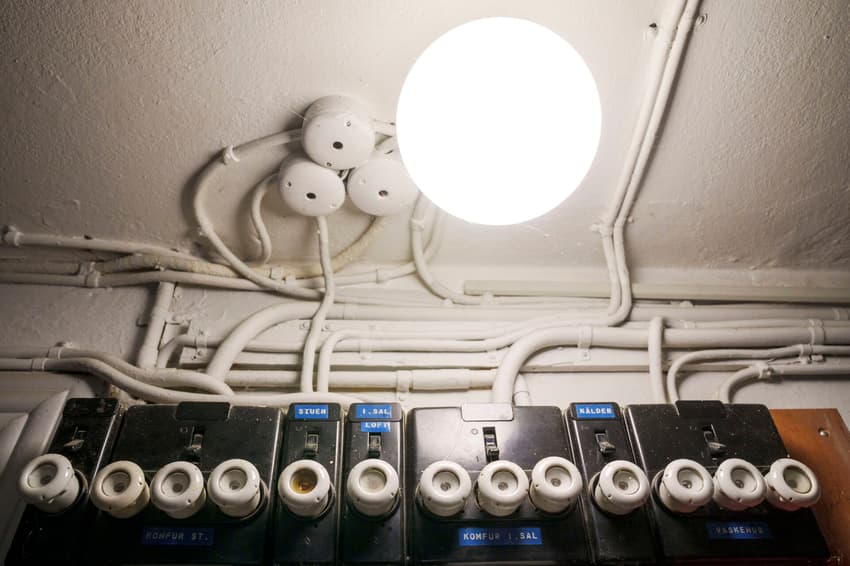Danes cut electricity use by ten percent with prices ‘the same’ as last year

Electricity prices were similar in January 2022 and January 2023, but consumers in Denmark used around 10 percent less power this year compared to last.
Increased awareness and saving measures appear to have left their mark on Danish electricity consumers, according to a report by broadcaster DR.
As energy bills shot upwards last year because of factors including inflation and the Russian invasion of Ukraine, many began to limit or economise their use of electricity and energy.
Measures included the use of apps to track the hourly price, use of appliances at night and turning down heaters and switching off lights.
READ ALSO:
- Danish energy firm to allow customers to opt out of pre-paid bills
- Fixed or variable price: Which electricity plan to choose in Denmark?
- How people in Denmark are changing their energy use to keep bills down
While electricity prices were extremely high during the late summer and autumn last year, reaching over 8 kroner per kilowatt hour in August, they are now back at a comparable level to January 2022, when the price rises were yet to take hold.
Analysis from energy companies NRGi and Norlys have both found that people in Denmark used considerably less electricity in January this year than they did 12 months prior, DR reports.
Norlys said its customers used 13 percent less energy from one January to the next, while NRGi found the same trend, placing the difference at around 10 percent.
“This shows that we have retained good habits,” Norlys Energy’s head of customer service Pernille Storgaard told DR.
That makes sense despite what are currently equivalent energy prices between this year and last, an analyst said.
“The fall in price [since mid-late 2022, ed.] looks like stopping now and then the electricity price will be at the level we have now. That is around 1 krone per kilowatt hour when it’s not windy and a bit less when it’s windy or the sun is shining,” Kristian Rune Poulsen, senior consultant with Green Energy Denmark, told DR.
Denmark’s increased reliance on wind and sun generated power means swings in price are more likely than in the past, he said.
“You can still save money by moving energy consumption by, for example, turning on the dishwasher at night. If you have an electric car, or are a high consumer of electricity, even more money can be saved by being a flexible consumer,” he said.
Comments
See Also
Increased awareness and saving measures appear to have left their mark on Danish electricity consumers, according to a report by broadcaster DR.
As energy bills shot upwards last year because of factors including inflation and the Russian invasion of Ukraine, many began to limit or economise their use of electricity and energy.
Measures included the use of apps to track the hourly price, use of appliances at night and turning down heaters and switching off lights.
READ ALSO:
- Danish energy firm to allow customers to opt out of pre-paid bills
- Fixed or variable price: Which electricity plan to choose in Denmark?
- How people in Denmark are changing their energy use to keep bills down
While electricity prices were extremely high during the late summer and autumn last year, reaching over 8 kroner per kilowatt hour in August, they are now back at a comparable level to January 2022, when the price rises were yet to take hold.
Analysis from energy companies NRGi and Norlys have both found that people in Denmark used considerably less electricity in January this year than they did 12 months prior, DR reports.
Norlys said its customers used 13 percent less energy from one January to the next, while NRGi found the same trend, placing the difference at around 10 percent.
“This shows that we have retained good habits,” Norlys Energy’s head of customer service Pernille Storgaard told DR.
That makes sense despite what are currently equivalent energy prices between this year and last, an analyst said.
“The fall in price [since mid-late 2022, ed.] looks like stopping now and then the electricity price will be at the level we have now. That is around 1 krone per kilowatt hour when it’s not windy and a bit less when it’s windy or the sun is shining,” Kristian Rune Poulsen, senior consultant with Green Energy Denmark, told DR.
Denmark’s increased reliance on wind and sun generated power means swings in price are more likely than in the past, he said.
“You can still save money by moving energy consumption by, for example, turning on the dishwasher at night. If you have an electric car, or are a high consumer of electricity, even more money can be saved by being a flexible consumer,” he said.
Join the conversation in our comments section below. Share your own views and experience and if you have a question or suggestion for our journalists then email us at [email protected].
Please keep comments civil, constructive and on topic – and make sure to read our terms of use before getting involved.
Please log in here to leave a comment.